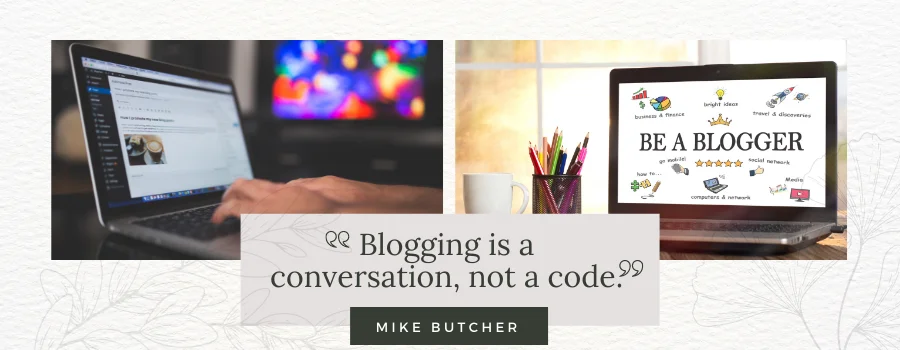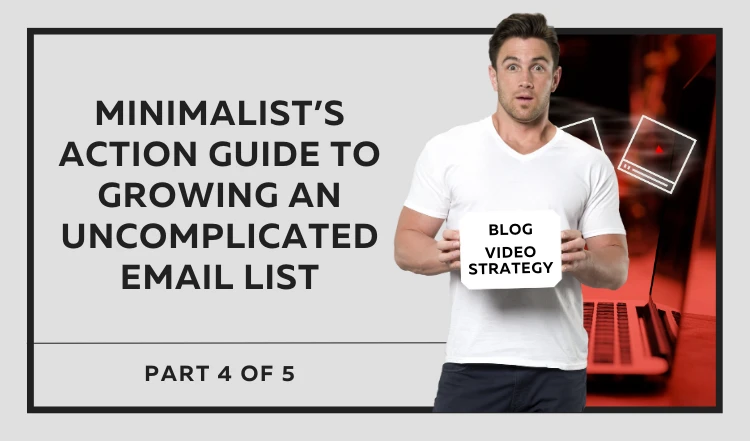Simple Ways To Crank Out Content On Demand
No matter what kind of business you run online, there’s a good chance you have a blog. And if you have a blog, then you need a lot of content.
But here’s the problem…
It takes a lot of time to create that content. If you outsource it, then it’s going to take a lot of money. Either way, creating content is a big investment.
Until now…
If you think you can’t create great content fast, think again. That’s because you’re about to discover 10 types of blog posts you can create in 10 minutes or less.
1. Create Articles Out Of PLR
Sometimes you might purchase PLR (private label rights) articles that you can minimally tweak and post right to your blog. In other cases, you might take excerpts out of PLR reports or ebooks, and then post these excerpts on your blog. Either way, it takes just minutes to create something unique and post it for your readers.
Here are some other tips for using PLR to create content:
- Use the transcripts from a PLR video to create an article for your blog. These transcripts may be included with the package, or you can create your own. TIP: This is particularly easy if the video includes slides, as you can simply create your article from the content of the slides.
- Compile multiple pieces of PLR content to create something entirely new. For example, you might take excerpts out of three or four PLR articles to create an entirely new article.
And speaking of excerpts…
2. Take Excerpts From Your Own Products
Obviously, this is a super-quick way to create an article. But the other bonus of this strategy is that you can quickly insert a pitch at the end of the article to promote the full product.
Now, there are two ways to use these excerpts:
- One way is to simply pull the excerpt directly out of the product, create an introduction and conclusion, and post it on your blog. For example, let’s suppose you have a report that lists ten strategies for cutting calories. You can excerpt out three to five of these strategies to create your article. Then at the end of the article, you can pitch the paid report as the place to get more of these great strategies.
- The second way is to cut some of the meat off the excerpt so that people will want to buy the product to get all the details. Let’s take the example of the report with ten strategies again. This time, you excerpt out all ten strategies, but you edit out some of the details. So, readers will get an article that tells them what to do, but they don’t get the exact instructions of how to do it. They’ll need to purchase the product to get those exact instructions.
3. Make Link Lists
A link list can come in a variety of formats, including:
- A gear list. These are tools you use that you’d recommend to others. It saves beginners a lot of time and money, since they don’t have to do as much research. For example, you might list all the plugins you use on your blog. Or if you’re writing to bodybuilders, you might make a list of all the “must use” supplements.
- A list of free resources. Here you might link to blog posts, reports, videos, and other free sources of content to help your readers achieve some specific goal.
- A list of paid resources. In this case, you’d write a short review for each resource to let people know who can use it and its benefits.
- A mix of paid and free resources. For example, “The Top 10 Resources Every Aspiring Copywriter Ought to Read.”
Again, the point is to save your reader time by doing some of the legwork and research for them. It’s much easier to get recommendations and content all in one place from a trusted source, rather than having to find products and sources yourself, and then must separate the wheat from the chaff besides.

4. Recap Your Recent Posts
The idea here is to create an “in case you missed it” list of your best posts in the last couple of weeks or months. Of course, you don’t need to just list blog posts. Instead, you can curate your own content across platforms, including your social media accounts and newsletters.
Another way to do it is by curating your best (recent) content around a very specific topic.
For example:
- Five Blog Posts That Will Change the Way You Think About Dieting
- The Three Posts Every Beginner Marketer Ought to Read
- The Five Keys to Improving Your Golf Score
All you need to do is write an intro to the post, list the resources along with a short explanation of why people should read each resource, and then wrap it up with a quick conclusion.
5. Interview Someone
Here’s a great way to create content fast: let someone else create the content for you. In this case, simply work up a list of questions by email and let your interviewee’s answers become your article. In exchange, your interviewee gets a byline with a link back to their site.
The following is an example email to send to land these interviews, and it works, so feel free to copy and paste it and use it yourself.
Subject Line: I’d like to feature you on my blog, [name]
Hi [First Name],
My name is [Your Name], and I run the popular [type of] blog over at [domain]. The reason I’m writing today is that I’d like to interview you and feature this interview on the blog.
The interview is just [small number] of questions, so it would only take about [small number of minutes] to complete.
In return, you’d get a byline and link back to your site, along with exposure to my [number] of readers and visitors. I’ll also send out the link to my [number] of newsletter subscribers and [number] of social media followers.
If you agree that this sounds like a great way to showcase your business to a targeted audience, just reply and I’ll send over the questions right away.
I look forward to hearing from you!
[sign off]
——-
Remember this: the easier it is for someone to comply with your request, the more likely it is that they’ll say yes. So don’t make your interviewee have to spend hours answering questions. Instead, shoot a couple quick questions their way that they can answer in just minutes. Then, if you want more info, send a couple follow-up questions.
Here’s why…
Once a person has answered your initial questions, they’ll feel invested and committed to your project. So, if you ask for 10 more minutes of their time to answer a couple additional questions, they’re very likely to say yes.
6. Tweak A Previous Article
The next idea is to comb through your existing content, find popular articles, tweak them, and republish the new version.
For example:
- If you previously published a list of ten tips, then excerpt out five of those tips, expand on them, and republish the new article.
- Update an old article with new information, such as new research that has come on the scene since you originally published it.
- Have you changed your mind about a product, idea, or other topic? Update an older article with your revised opinion.
Those are just three ways to take your existing content and turn it into something new. Be creative, and you may be able to create dozens of new articles from your old content.

7. Turn Existing Content Into an Infographic
Another good way to quickly create content is to simply change your existing content into a different format. And one way to do this is by turning an article into an infographic.
Here are examples of articles that would make good infographics:
- An article discussing multiple ways to boost conversion rates on a website.
- An article explaining how metabolism works.
- An article that talks about different garden pests and how to get rid of them using organic pest control methods.
Just be sure your infographic includes social media buttons next to it because this is the kind of content people really like to share.
8. Ask For Content From a Vendor
Are you an affiliate for a product or service? Then one great way to quickly get your hands on some free content is by asking the product vendor to supply it for you.
Your first stop is to check the affiliate center if one is available. That’s where the vendor has likely supplied affiliates with all sorts of content, including blog posts.
However, you want unique content, right? So don’t go straight to the blog post category, as all the other affiliates are likely copying and pasting those articles to their blogs. Instead, look at other content such as reports, emails and similar. Find something suitable, and then ask the vendor if you can modify it for your blog, such as taking an excerpt out of a report.
If you’re not finding what you like within the affiliate center, then write to the vendor and request an article. The vendor is more likely to give you content – especially exclusive content – if you’ve already proven yourself to be a good affiliate.
9. Do Multimedia Posts
So far, we’ve been talking about how to quickly create text articles. However, you don’t need to write a single word if you don’t want to.
Instead, pick up a camera to do a quick video on the topic of your choice.
You can also simply turn on a microphone to do a quick podcast. You don’t even need expensive tools, as a simple tool like Audacity will let you capture and edit audio for free. You can get this open-source tool by clicking here.
For example:
- Turn the camera on and just spend five minutes talking about your top five weight loss tips.
- Film yourself trying out and reviewing a new product.
- Give a demo on camera, such as how to teach a dog to sit.
- If you’d like to demo something on your screen, such as how to set up a blog, then use screen-recording software such as Camtasia.
Then all you must do is upload the video to YouTube (for greater exposure), break it into 10 second clips for TikTok, and/or turn it into a few helpful Instagram Reels. And, of course, don’t forget to embed the YouTube video on your own blog.
10. Copy And Paste Your Emails
One very good source for articles and other content are your own emails. Here I’m talking about two things:
- If you broadcast an announcement, article, or other content to your mailing list, then put this content on your blog as well. Let your newsletter readers know you’re posting the content on your blog, and then encourage them to click through and discuss the topic.
- If you reply to a customer’s question, and you realize it would make a good post, then use it. Naturally, you won’t use any of the customer’s identifying information. Instead, you might say something like this at the beginning of the post: “Just about every week, the same question tends to pop up in my email from people just like you. Look and see if you’ve wondered about this topic too…”
As you just discovered, you don’t need to spend a lot of time creating great content. All you need is ten minutes or less, and you can have a blog post ready to go out the door. In fact, I bet you can create one of these posts right now and get it up on your blog right away. Go ahead and see for yourself just how quick and easy it is to create content using these tactics.





